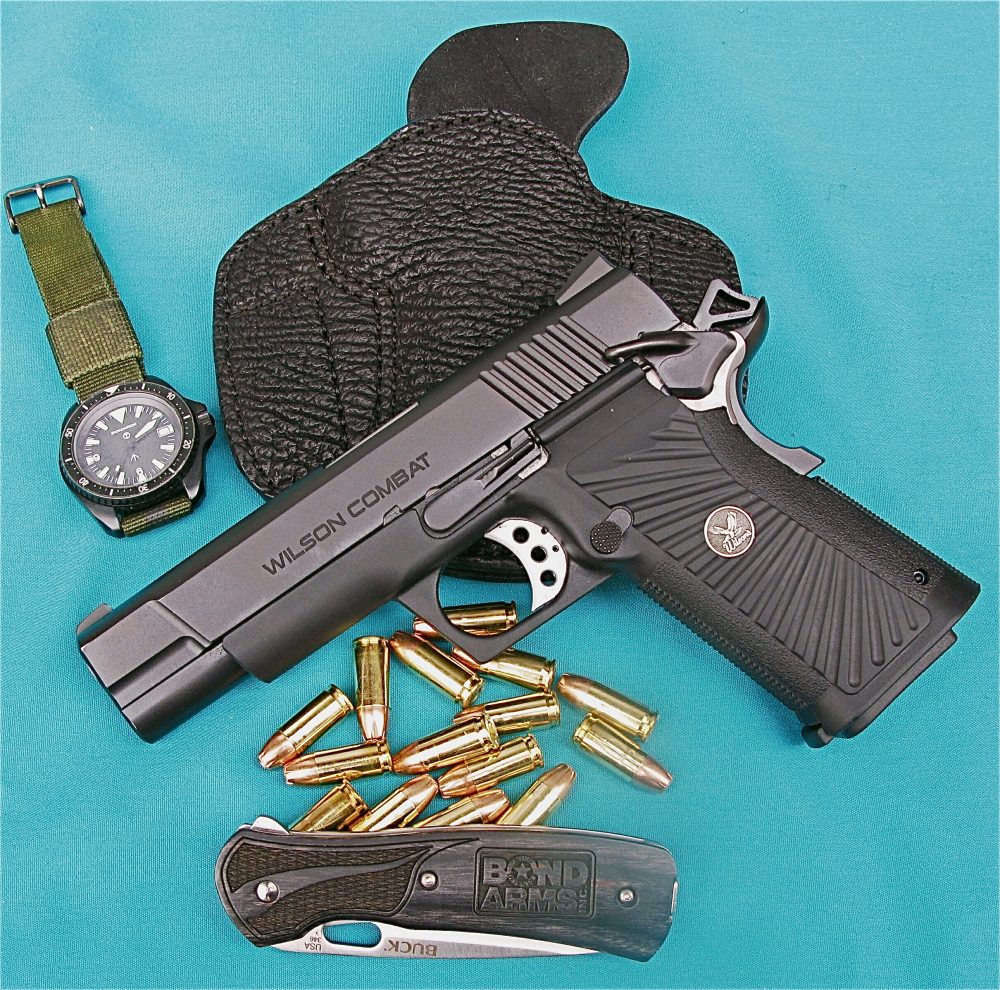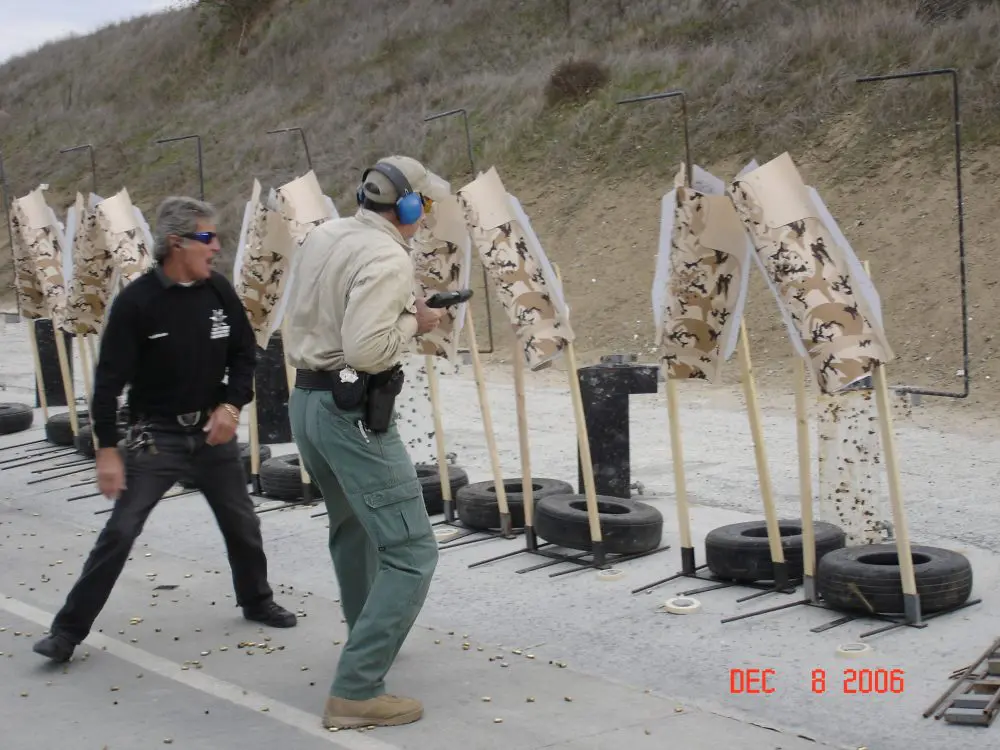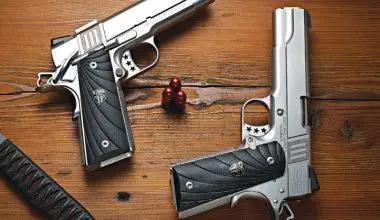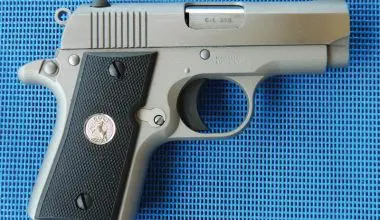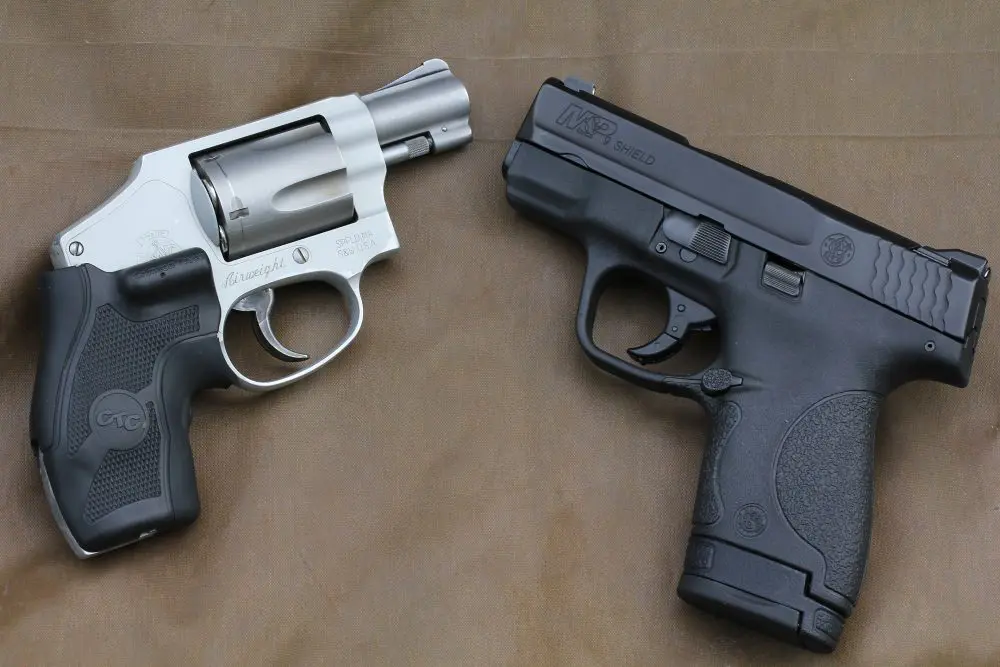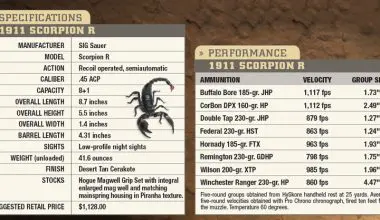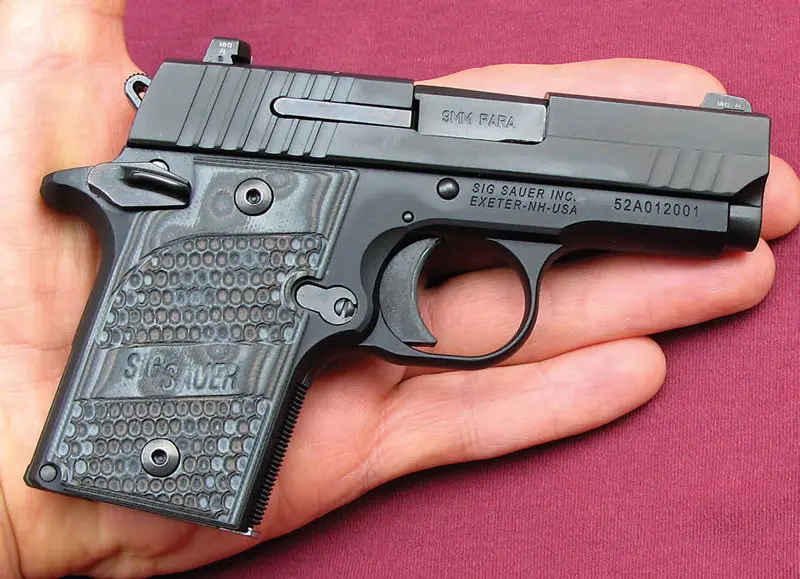
Because of real and imagined threats to gun ownership, firearms sales have gone through the roof. Every time there is a mass shooting by some disturbed individual, anti-gunners become more vocal and demand increased restrictions and outright banning of selected firearms and ammunition. This in turn results in anxious buying by a fearful public.
Among the most sought-after personal defense firearms on the market are small, powerful, ultra-concealable handguns that handle the big three defensive calibers.
Table of Contents
MICRO 1911 NINE
For years now, SIG Sauer has had subcompact pistols available to the public in calibers larger than the increasingly popular .380. Capitalizing on their great success with the micro single-action P238 1911 lookalike, SIG has created a slightly larger version in 9x19mm.
Even with meaningful improvements in .380 ACP ammunition, many shooters prefer something more potent. Except for the lack of a grip safety, the new P938 is a dead ringer for its larger SIG 1911 siblings and comes in three other very attractive models. It’s the smallest 9mm Parabellum in the SIG line-up.
The all-black Extreme model that I received arrived in a sturdy plastic carrying case with two single-stack stainless steel magazines, a cable lock, TW 25 lubricant, plastic cleaning rod, and pocket-sized manual.
The short six-round magazine has no base pad and fits flush with the pistol’s magazine well. With the short stick in place, a two-fingered grip can only be established with the pinky curled under the magazine.
The extended magazine with its pinky rest base pad picks up one additional cartridge, supports a three-fingered hold, and creates a comfortable grip with a small gun.
Magazine springs are quite stiff, and it takes some effort to load the mags to capacity. Leaving them loaded for extended periods will cause the springs to ease up a bit. Fully topped off, they seat positively with a smart push when the slide is in battery.
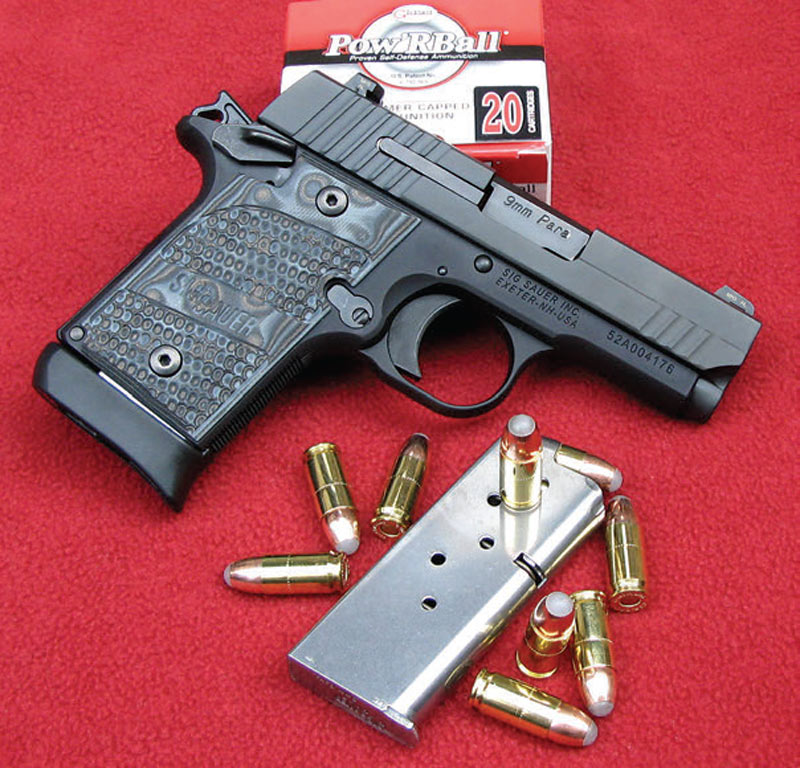
FLAT PIECE
The P938’s stainless steel Nitron-finished slide is less than an inch wide at its widest point, making it a very easy piece to conceal. From its stern, a Commander- style skeletonized hammer with serrations for thumb cocking is encountered. Topside, you bump into a rather plain looking, but very functional, rear sight with Tritium inserts.
Unlike sexy-looking Novak-type sights, which can be extended over the end of the slide, the Extreme loses .37 inches of sight radius by being dovetailed farther up on the slide’s dorsal surface. But it’s blocky enough to facilitate one-handed emergency function drills by hooking the edge of a belt with its forward edge. I consider this a big plus over other sight designs.
Both front and rear sights are dovetailed into the slide and can be drifted for lateral changes in impact, or removed completely and replaced.
The slide’s deep and bold aft serrations provide an excellent degree of purchase for every type of slide manipulation. Token but functional muzzle serrations are available for those who prefer forward slide manipulation, but overall the Nitron finish offers a very positive grasping surface.
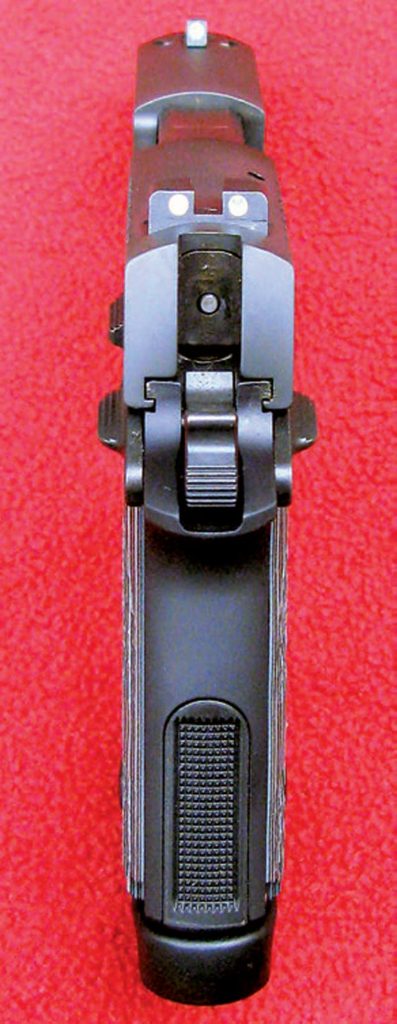
The external extractor is huge and flanks one side of the cavernous bolt face, which almost swallows the base of the cartridge where most case failures occur.
NO GRIP SAFETY
The aluminum frame has a modest but effective beavertail but no grip safety. In this respect and with its fixed barrel link, the Extreme is more like a Browning Hi-Power than a 1911.
Its flat backstrap has abbreviated machine checkering and intuitive miniature gas pedal ambidextrous thumb safeties. The rear edges of the safety are not melted, and the right-side lever pinches the meat of my trigger finger when it is disengaged by downward thumb movement. Safety disengagement with the thumb is easily accomplished, but reengagement requires effort.
Hogue G-10 Piranha grips dramatically enhance the Extreme’s profile while providing excellent purchase on the gun. The grip panels are firmly held in place by a quartet of Torx screws. They stayed nice and tight even after hundreds of rounds had passed through the pistol.
Frontstrap checkering is larger and more aggressive than that of the backstrap and smoothly merges with a slightly undercut round trigger guard. Just above that area is the magazine release button, which can be actuated without relinquishing your firing grip. The magazine is beveled to assist in magazine changes, and spent sticks readily pop free when the magazine release is triggered.
FEELS GOOD, POINTS NATURALLY
The medium-size curved trigger appears to be plastic and is not adjustable. It’s heavy with some creep and takes a very deliberate action to drop the hammer. Trigger edges and serrations are sharp, and sustained firing can be uncomfortable. However, judicious use of a Dremel tool can easily correct this problem. Moving up, the slide stop is encountered. The P938 has no under-barrel accessory rail. For a small gun, it feels good in the hand and points naturally.
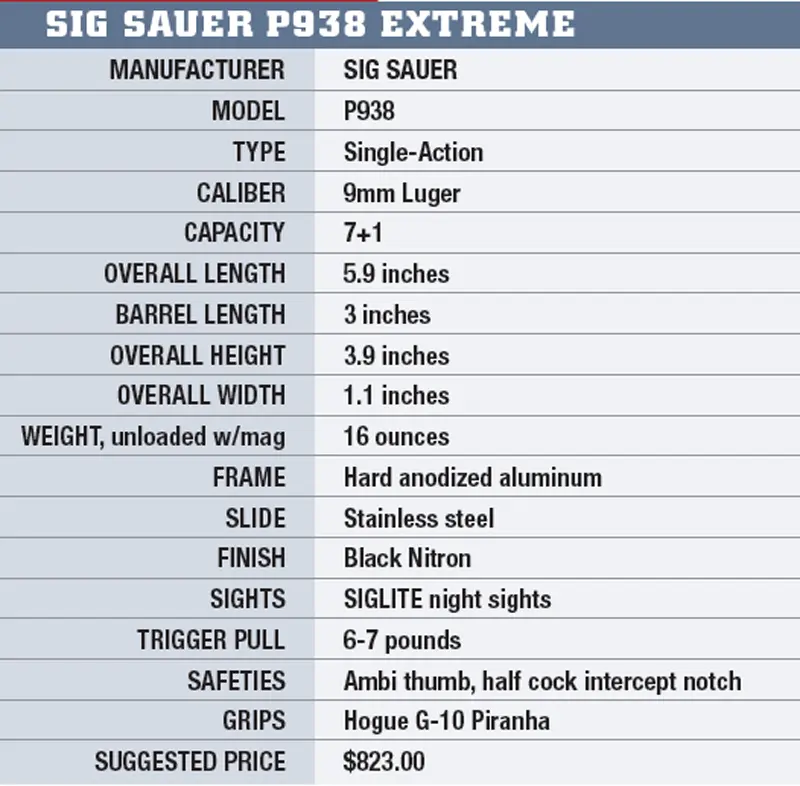
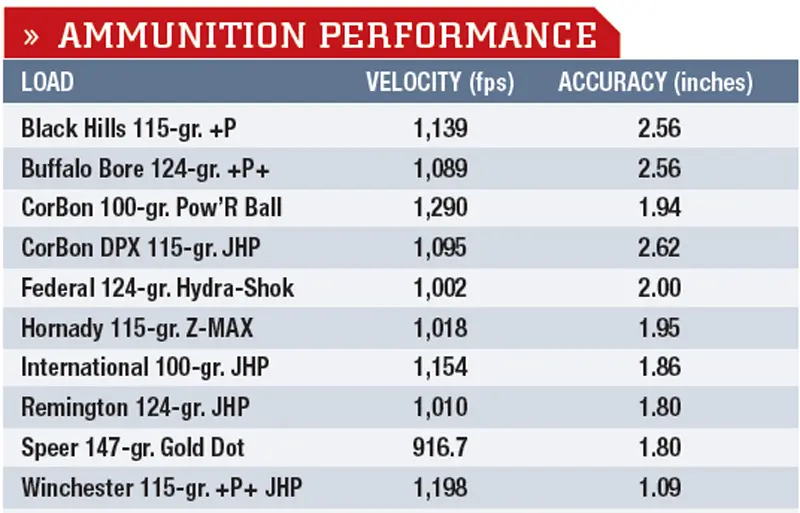
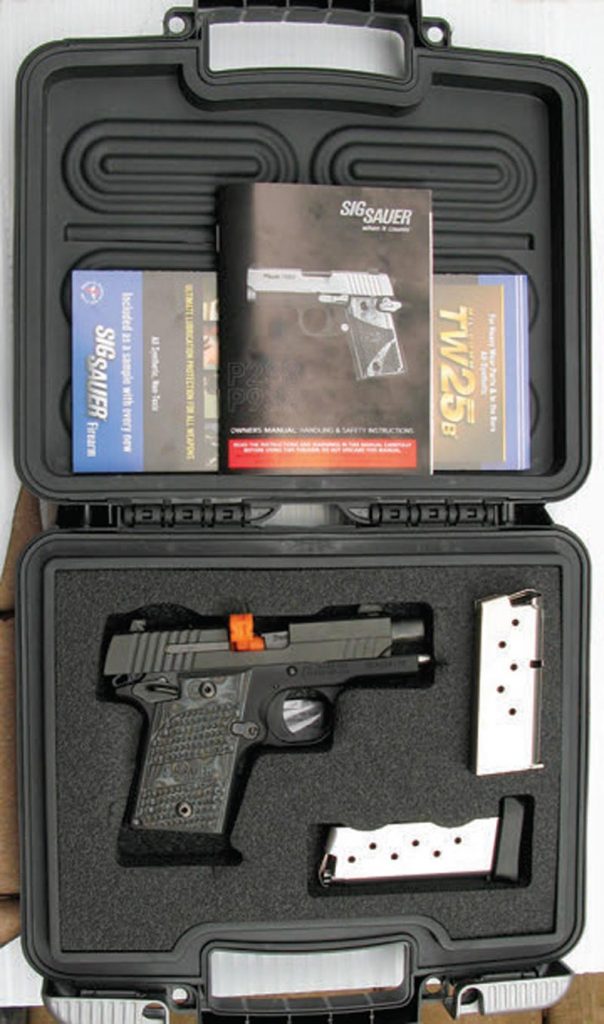
FIELD STRIPPING CHALLENGES
Those with 1911 experience should have no trouble dismantling the Extreme for periodic maintenance. Notice I used the word “should,” but more on that later.
Recoil spring tension requires a bit of strength and know-how to move the slide back far enough to line the slide stop up with the disassembly notch and hold it there while you remove the stop. The stop on the test pistol was very tight and required a brass punch to push it out of the frame. A tight-fitting slide stop is good, because it makes for a tighter barrel-to-slide lockup, and this helps increase accuracy potential.
After checking the pistol’s chamber visually and tactilely, put on a pair of protective glasses and point the Extreme in a safe direction.
- Retract the slide rearward until the slide disassembly notch is aligned with the slide stop tab.
- Remove the slide stop.
- Move the slide forward and off the frame.
- Remove the guide rod and recoil spring from the barrel/slide.
- Remove the barrel.
- Reassemble in reverse order.
Sounds simple, but this klutz had problems.
After returning barrel and recoil system to their proper places, I remounted the slide to the frame, taking care to depress the exposed ejector just enough to clear the slide. (Pushing it too far down can result in the ejector binding in the frame. This cannot be corrected in the field, and the Extreme must be returned to the factory for repair.)
I then dutifully lined up the slide stop tab with the slide disassembly notch. I looked in the small aperture and could see daylight, which I assumed was the opening in the fixed barrel lug. I pushed the slide stop in until it was firmly seated and released the slide. Easy, just like the half-dozen 1911s in my inventory and the ones I cut my shooting teeth on—NOT!
The slide went forward but did not return to complete battery, instead remaining about half an inch shy of that destination. To make matters worse, the slide stop was solidly locked in via spring tension. This is a handsome little rascal and I was careful not to mutilate the frame, but my aggressive attempts to remove the stop were fruitless.
Reluctantly, I sent it back to the factory, where Pistol Product Manager Tim Butler corrected the problem in a nanosecond. His tip is, “look in the slide lock stop hole and line up the slot in the barrel with the hole. Insert the slide lock way into the barrel slot and then pull the slide to the rear until the slide lock lines up with the take-down release slot on the slide and complete slide lock insertion.”
Incidentally, serious shooters should keep a logbook on each firearm they own. SIG recommends replacing the recoil spring every 1,500 rounds.
RANGE TIME
Ten different loads ranging from 100 to 147 grains were involved in the accuracy and velocity phases of testing and evaluation.
From the bench at 15 yards, reliability was 100%, but even with the lightest loads, healthy recoil and muzzle flash were quite evident. Standing off hand was another matter. The pistol was much more pleasant to shoot when my body helped absorb the pistol’s dynamics. However, a failure to fire from a light primer hit with Federal 124-grain Hydra-Shok jacketed hollowpoint (JHP) and failure to feed with Buffalo Bore 124-grain JHP occurred. Upon re-strike, the Federal detonated.
At 15 yards, the tightest five-round group of 1.09 inches was produced by Winchester +P+ 115-grain at an average velocity of 1,198 feet-per-second (fps). CorBon 100-grain Pow’R Ball at 1,314 fps achieved highest individual round velocity. The two most pleasant loads to shoot were standard pressure Hornady 115-grain Z-MAX and International 100-grain HP.
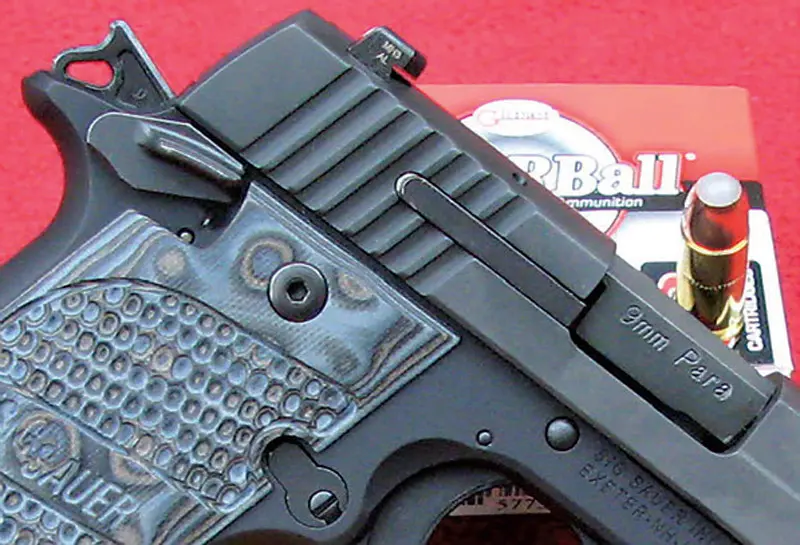
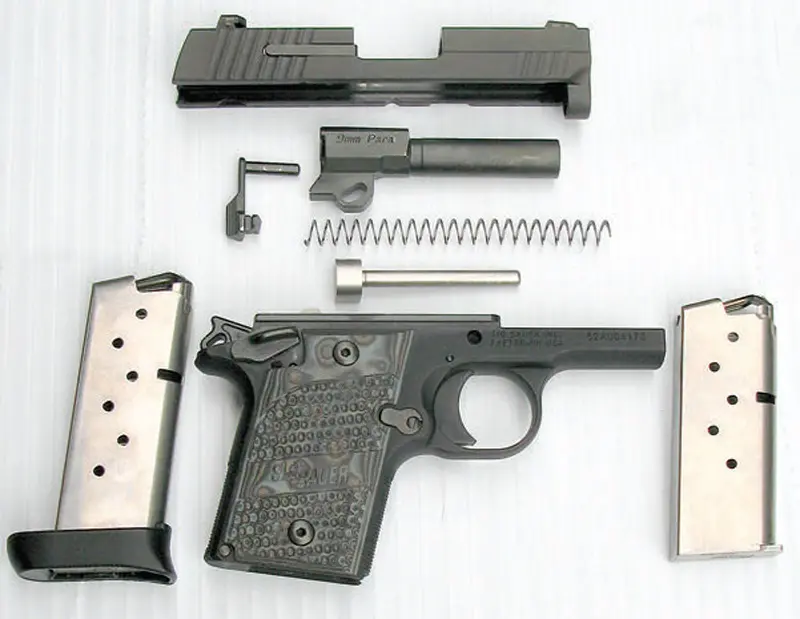
SHORT-RANGE FIGHTER
Like its popular but lower powered P238 predecessor, the P938 is a short-range fighting tool. Although chest cavity hits can be realized at 25 yards without the pressure of a gun battle intruding, its short sight radius and heavy trigger pull confine the mini 1911 to a maximum personal defense envelope of 15 yards.
Zeroed for a six o’clock hold, general bullet strike is acceptably high at 45 feet, but elevated several inches and quite dispersed above point of aim at 75 feet. To execute a head shot, one would have to hold at the neck or chin and, without a lateral sight adjustment, lateral deviation would most likely result in a miss.
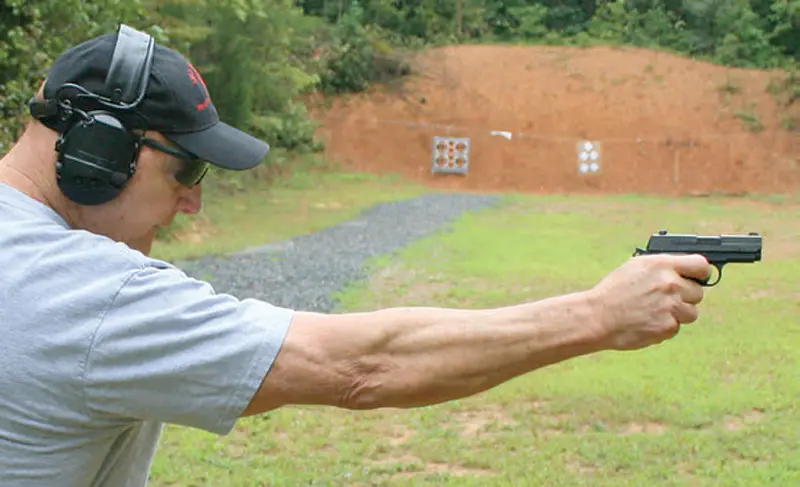
As a right-handed shooter, my primary group was five inches high and strung along the left side border of a Birchwood Casey Shoot N See 9×6 target. At mid range, Black Hills 115-grain +P JHP and CorBon 100-grain Pow’R Ball were the only two loads that shot to point of aim.
For close combat (five to seven yards), where fast multiple shots may be desired, don’t try to outrun the reindexing of the front sight on target or the heavy trigger will cause your hits to print low.
In tighter circumstances, by all means get on the throttle and saturate the threat with multiple hits until it no longer presents a problem. At these breath-smelling distances, where you are reacting to a deadly force threat and most defensive shooting will be with one hand, the P938 works well as a onehanded gun.
CONCLUSIONS
The P938 will appeal to the 1911 aficionado who wants all his sidearms’ manuals of arms to work the same way, and/or the P238 fan who wants a pistol that looks and feels the same but has more power without significantly increasing the gun’s weight and physical dimensions.
In the SIG Sauer tradition, the P938 is a well-made and very attractive handgun, but comes at a steep price.
